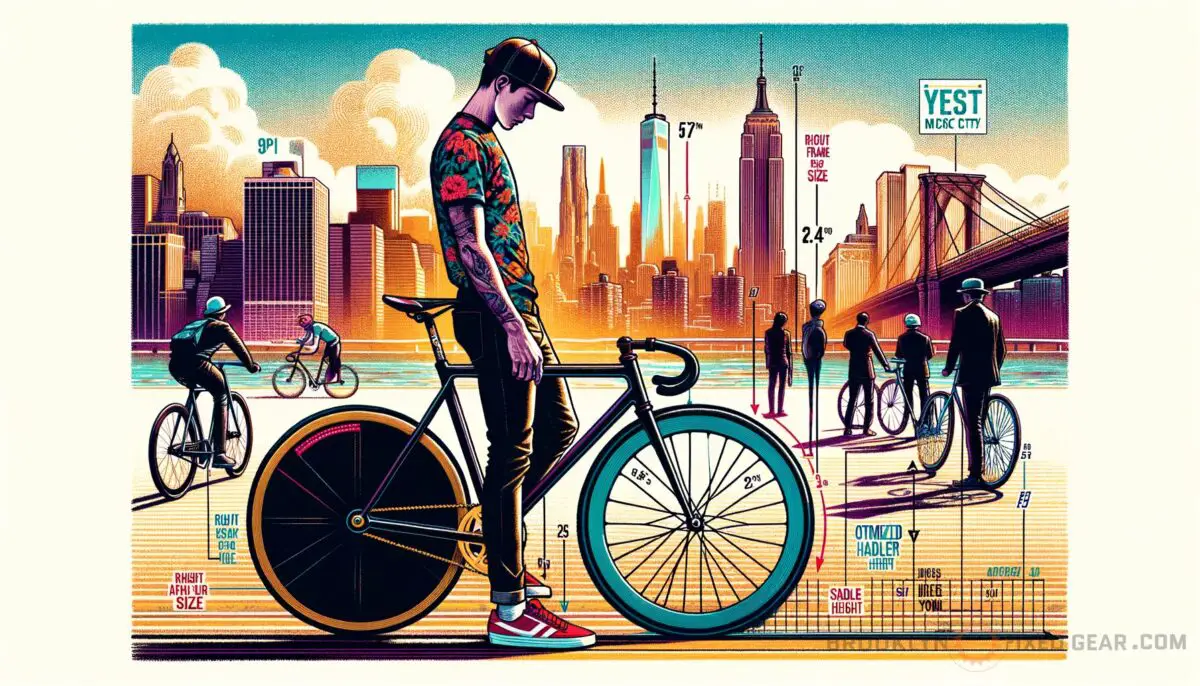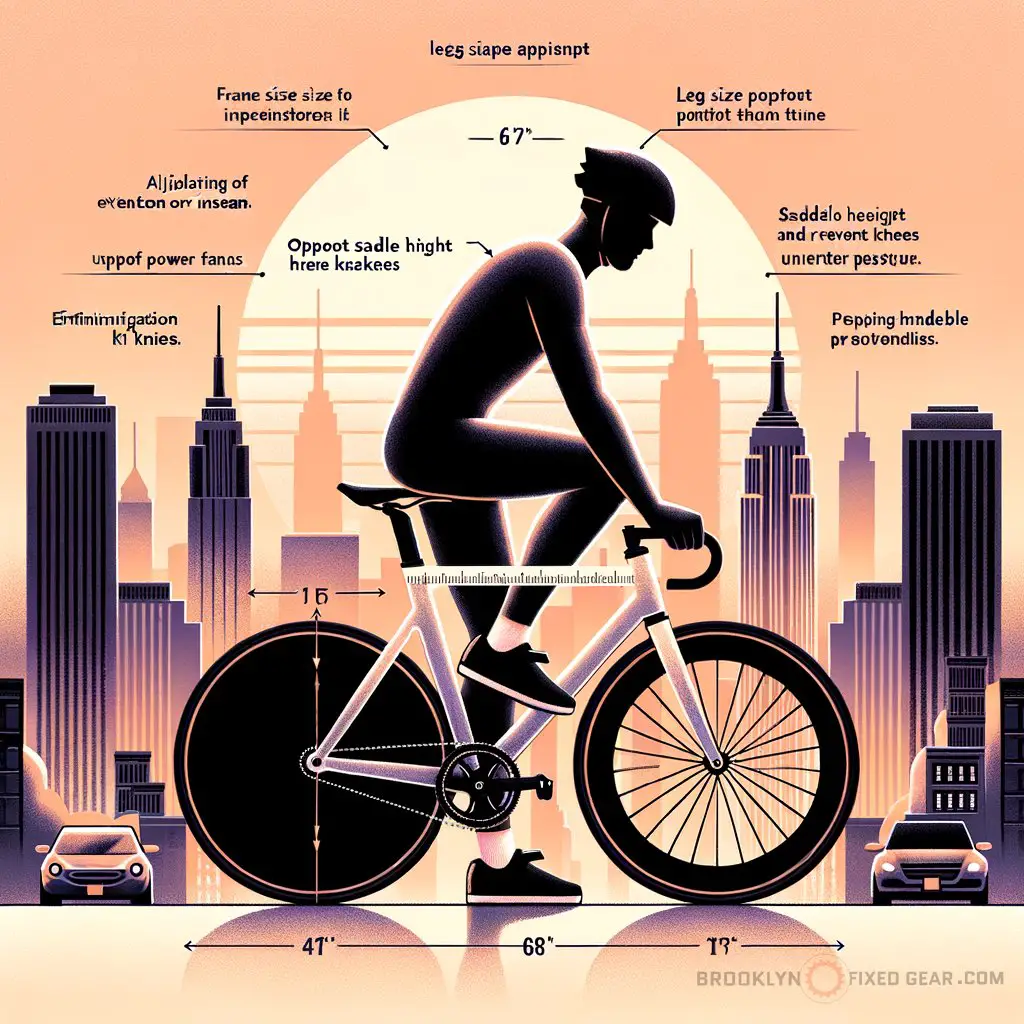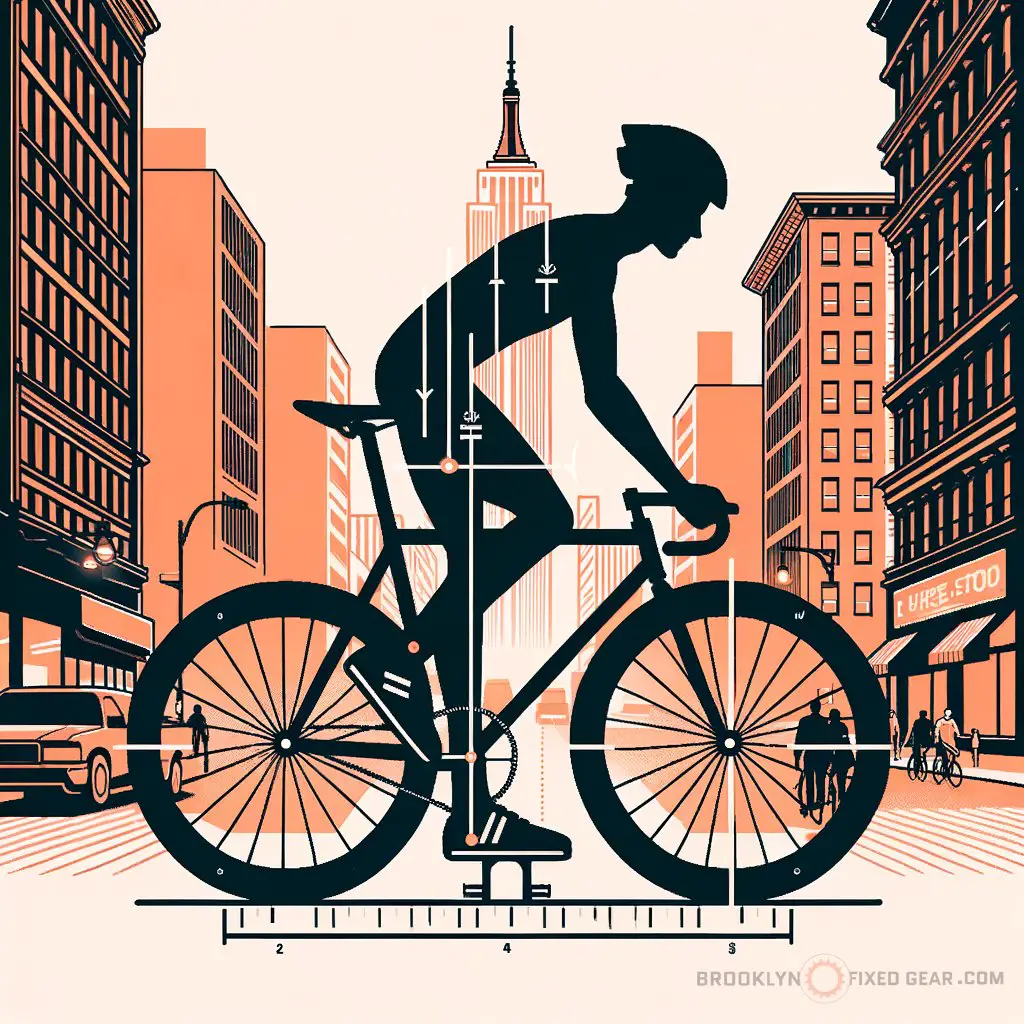Ever pedaled through the bustling streets on a fixie and felt an odd knee twinge?It might be your ride calling for a fitting session.Imagine gliding down the avenues on one of these best fixie bikes with the comfort dialed to perfect harmony with your body.
Ever wondered how bike fitting could rid the aches and boost your ride? Today, we’re unlocking the secrets to bike fitting and injury prevention.
Key takeaways
- Choose the right frame size for a foundational fit.
- Adjust your saddle height to prevent knee injuries.
- Handlebar positioning is key for upper body comfort.
How can proper bike sizing shield you from common injuries?
Selecting the right bike size and adjusting it to fit your body can be a game-changer in avoiding injury and improving performance. So, let’s take a deep dive into the key aspects of bike fitting and injury prevention, ensuring that every ride is as smooth as silk and safe as houses.

1. Get the right frame size
The foundation of a good bike fit is the right frame size. A frame that’s too large or too small can lead to overreaching or cramping up, which can cause a host of musculoskeletal issues. Check out the latest guide on the best fixie bikes to find a frame that matches your height and inseam measurements.
A proper frame size allows for optimal leg extension during the pedal stroke, ensuring efficient power transfer and reducing the risk of knee pain. Remember, a bike that fits well feels like an extension of your body, so start with the right foundation.
2. Optimize the saddle height
Once you’ve got your frame size dialed in, it’s time to zero in on your saddle height. Saddle height affects your leg extension and can make or break your riding experience. Too high, and you’ll rock on the saddle; too low, and you’ll strain your knees.

An appropriately set saddle height prevents overextension or underextension of the knees, two common causes of cycling-related injuries. Here’s an informative piece on how to choose a bike saddle , ensuring your ride is as comfortable as it is efficient.
3. Adjust handlebar position
The handlebar position can have a significant impact on your upper body comfort. If they’re too far or too high, you might experience back, neck, or shoulder strain. Conversely, low handlebars can create an aggressive position and possible discomfort over long rides.
Finding the right handlebar height and reach creates a balanced riding posture, allowing for better control and reduced strain on the upper body. Check out these top picks for fixie bike handlebars to help you find a comfortable and aerodynamic position.

4. Check your foot positioning – cleats setup
Cleat positioning on your shoes heavily dictates your pedaling mechanics. Misaligned cleats can lead not only to foot discomfort but also to issues up the kinetic chain, including knee and hip problems.
Setting up your cleats correctly ensures that the power from your legs is effectively transferred to the pedals without any adverse side effects. It’s critical to spend time getting this right or working with a professional.
5. Personalize accessory fit
Last but definitely not least, don’t underestimate the fit of your accessories like pedals and grips. These points of contact with your bike can add up to significant discomfort if they’re not the right fit for your body and riding style.
Make sure your biking accessories complement the overall fit of your bike. From pedal straps to your choice of grips, personalizing these details will enhance handling and decrease the risk of overuse injuries. Find essential tools for fine-tuning your bike fit and keep those rides enjoyable and pain-free.
State Bicycle Co. Black Label 6061

State Bicycle Co. Black Label 6061
More bike fitting tips
To really lock in that perfect bike fit and make sure you’re cruising with the best of them, here are some extra bits of advice. It’s all about the nuances that can make or break your riding experience – these tips will help you refine your ride.
- Regularly assess and adjust your bike setup, especially when you switch components or gear.
- Engage in strength and flexibility training off the bike to support optimal cycling posture.
- Use a plumb line to check the alignment of your saddle, handlebars, and pedals.
- Invest in a professional bike fitting if you’re serious about cycling performance and comfort.
Moving on to the fine line between the dos and don’ts in bike fitting, it’s usually the small changes that make a huge difference. To help you navigate, here’s a crisp table on what to embrace and what to steer clear of.
| Do | Don’t |
|---|---|
| Do get the right size frame | Don’t guess your bike size – precision is key |
| Do adjust saddle height meticulously | Don’t overlook saddle position – discomfort spells trouble |
| Do find a comfortable handlebar reach | Don’t sacrifice comfort for aerodynamics |
| Do align cleats for optimal leg motion | Don’t neglect the impact of foot positioning |
“Imagine gliding down the avenues on one of these best fixie bikes with comfort dialed to perfect harmony with your body. It’s like a secret passage to a smoother ride and it’s all in the fit—a bike that’s tuned to your dimensions can transform your cycling experience. “
Advantages and disadvantages of bike fitting
When you’re pedaling through the city, bike fitting can be your secret weapon or an overlooked kryptonite. It’s a balancing act where each turn of the wrench can propel you forward or knock you off course. So, let’s weigh the pros against the cons:
Pros:
- Enhanced cycling efficiency
- Improved overall comfort
- Reduced risk of injury
- Greater power transmission
- Better handling and control
Now, it’s not all tailwinds and sunshine. Bike fitting has its limitations too, and here’s what to watch out for.
Cons:
- Initial cost and time investment
- May require frequent adjustments
- Can be challenging without professional help
- Components for optimal fit may be expensive
In my opinion, when it comes to ensuring a comfortable, injury-free ride, bike fitting is like finding the right key for a lock. It’s something I’ve come to appreciate through many cycles and numerous tweaks to my own setup. While I’m not an expert, I truly believe that the attention to detail you give your fit can make the difference between a good ride and a great one.
It’s about more than just avoiding pain; it’s about maximizing the joy and efficiency of your ride. And if you’re considering converting your fixie for a different kind of adventure, it’s pivotal to consider how your bike fit might need to adapt. Discover how to transform your fixie for touring adventures and keep that fit personalized for your cycling journey.
If you are a visual learner, check out this video titled ‘Optimizing Bike Fit to Prevent Injury’
Frequently asked questions (FAQ)
What’s the most overlooked aspect of bike fitting for new cyclists?
Many new cyclists tend to overlook the importance of pedal and cleat alignment. It’s not just about throwing on any pair of shoes and hitting the road. Your feet are the primary contact point with your bike, so having your pedals and cleats set up correctly can significantly impact your efficiency and comfort levels.
How usually should I re-evaluate my bike fit?
You should re-evaluate your bike fit at least once a year or if there’s been a change in your riding style or physical condition. It’s also a good idea to check your fit after changing any equipment or suffering from any discomfort during rides.
Can bike fitting impact my speed?
Absolutely, bike fitting can have a big effect on your speed. A well-fitted bike allows for better power transfer from your muscles to the pedals. When you’re not wasting energy on compensating for a poor fit, you’re more efficient, and that can translate to faster speeds and longer rides with less fatigue.
Final thoughts
As we coast to a stop on this bike fitting journey, keep in mind that the perfect fit is a blend of science, art, and personal preference. Like a well-oiled chain, every detail in bike fitting works together to create a ride that’s efficient, comfortable, and joyful. So take the time to get your fit dialed and enjoy every mile.
Remember, in the cityscape of cycling, a great bike fit is your best ally.
Have the tips and insights given you a new perspective on how bike fitting can change your ride? Did I cover everything you wanted to know? Let me know in the comments section belowI read and reply to every comment.
If you found this article helpful, share it with a friend, and check out my full blog for more tips and tricks on bike fitting and injury prevention. Thanks for reading, and here’s to tailor-made rides that feel just right!















